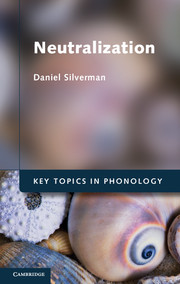16 - Boundary signals
Published online by Cambridge University Press: 05 November 2012
Summary
We've now clearly established that both static and dynamic neutralization increase rhyme in phonology by limiting the inventory of phonetic distinctions within words and morphemes. Dynamic neutralization may also synchronically shrink the number of phonetic distinctions among words and morphemes in particular contexts, in the form of homophone-inducing alternations, or neutralization. At this level of analysis, only homophone-inducing alternations are genuinely function-negative; static suspension of contrast and non-homophone-inducing alternations being heterophone-maintaining, and thus function-neutral.
Nonetheless – and as already preliminarily considered in the context of Kruszewski's “cement” – in their role as what Trubetzkoy (1939) calls “boundary signals”, the increases in phonological rhyme brought about by neutralization can and do increase phonological reason as well, by playing a demarcative or syntagmatic role in terms of cueing word or morpheme boundaries. As Trubetzkoy notes: “In addition to the phonological means serving to distinguish individual units of meaning (sememes), each language has a number of means that effect the delimitation of such individual units of meaning . . . [E]ach language possesses specific, phonological means that signal the presence or absence of a sentence, word, or morpheme boundary at a specific point in the sound continuum” (p. 273). Trubetzkoy continues with a helpful analogy to boundary signals: “They can probably be compared to traffic signals . . . It is possible to get along without them: one need only be more careful and more attentive. They therefore are found not on every street corner but only on some. Similarly, linguistic delimitative elements generally do not occur in all positions concerned but are found only now and then. The difference lies only in the fact that traffic signals are always present at ‘particularly dangerous’ crossings, whereas the distribution of linguistic delimitative elements in most languages seems to be quite accidental. This is probably due to the fact that traffic is artificially and rationally regulated, while language shapes and develops organically” (p. 274).
- Type
- Chapter
- Information
- Neutralization , pp. 165 - 173Publisher: Cambridge University PressPrint publication year: 2012



